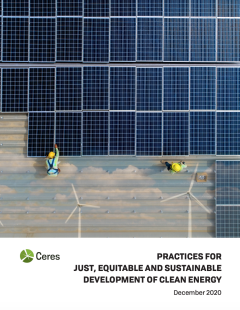
The U.S. energy sector’s shift to clean energy is creating a once-in-a-generation opportunity to build a more just, equitable and sustainable society. But this will not happen automatically. Wind and solar are being rolled out at record rates nationwide in response to the magnitude of the climate crisis. In 2019, for the first time ever, renewable energy consumption eclipsed coal. The new U.S. administration’s ambitious plan for making the power sector carbon free by 2035 is likely to accelerate the transition even more. This transformation is not just reshaping the energy sector. It is also dramatically changing American jobs and communities--creating jobs for local communities that are safe, well-paid and offer a career pathway.
Achieving this will require that the key actors, including power purchasers, investors, developers and regulators, expand their analysis of the potential impacts and opportunities of clean energy projects beyond cost and scale to include local jobs, communities and sensitive ecosystems and resources. Ceres recommends the clean energy industry adopt five best practices to help ensure that the transition to clean energy in the U.S. is just, equitable and sustainable:
- Engage stakeholders about environmental, workforce and community concerns throughout the clean energy development process.
- Protect and efficiently use environmental resources by employing best practices for siting, wildlife protection, compensation and community involvement.
- Adopt responsible contracting policies that provide a framework for ensuring a clean energy transition delivers on its promise of good jobs and economic opportunity for local workers and communities.
- Provide meaningful local economic benefits by investing in, helping develop or advocating workforce investment, with a focus on underserved communities and workers of color and just transitions for conventional energy workers being displaced by clean energy projects.
- Ensure compliance and monitoring by evaluating developer commitment to provide long-term transparency for all project partners and stakeholders.
